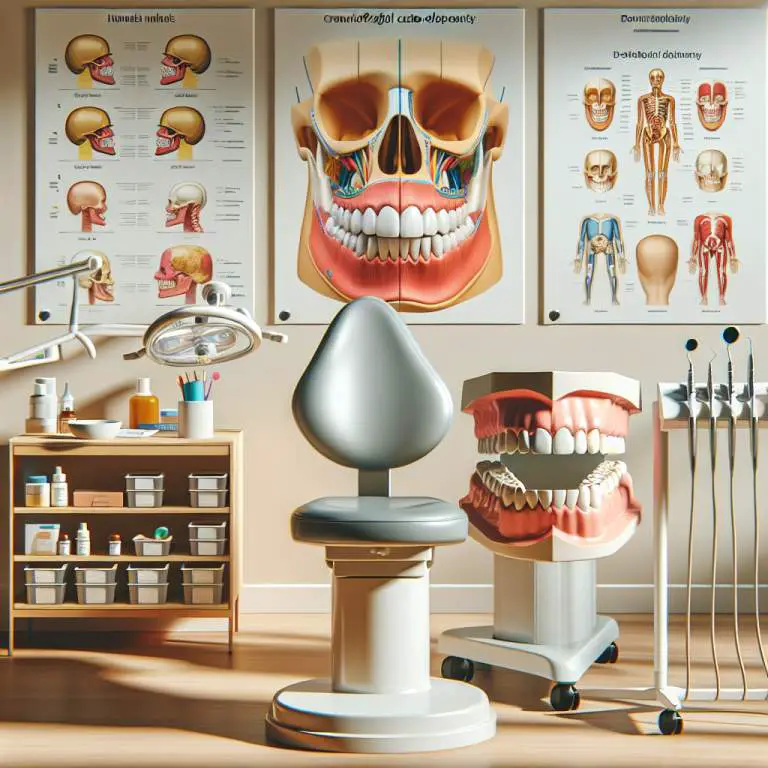How does mewing affect the temporomandibular joint (TMJ)?
Mewing, which involves proper tongue posture, can impact the temporomandibular joint (TMJ) by potentially reducing symptoms of TMJ disorders. By promoting correct jaw alignment and reducing tension in the jaw muscles, mewing may offer relief to some individuals. However, it’s important to approach this technique with caution as improper practice could worsen TMJ symptoms. Consulting with a healthcare professional before starting is advised for those with TMJ disorders.

How does mewing theoretically impact the temporomandibular joint?
Mewing is a technique that involves placing your tongue against the roof of your mouth. This position is thought to help with many things, including the health of your jaw joint, which is called the temporomandibular joint (TMJ). When you practice mewing, it’s believed that this can change how your jaw sits and works.
This change might be good for your TMJ because it encourages a more natural alignment of your jaw. When your tongue pushes up, it might help in balancing the forces around your jaw. This could mean less stress on your TMJ, making it feel better if it’s been sore or stiff.
What are the potential benefits of mewing for individuals with TMJ disorders?
People who have TMJ disorders often deal with pain and discomfort around their jaw. Mewing might offer some relief by promoting a healthier jaw position. If done correctly, this technique could reduce tension in the muscles around the jaw and even improve how you chew and talk.
Another possible benefit is better breathing. Since mewing encourages you to keep your mouth closed and breathe through your nose, it can lead to improved airway health. For someone with a TMJ disorder, breathing easier can also mean less strain on their jaw throughout the day and night.
Are there any risks associated with mewing for those with TMJ issues?
While mewing has its potential benefits, there are also risks, especially for people already dealing with TMJ problems. If not done carefully, trying to change how you hold your tongue can put extra pressure on your jaw. This might make TMJ symptoms worse instead of better.
It’s also important to remember that everyone’s body is different. What helps one person might not work for another. So, if someone with a TMJ disorder tries mewing without professional guidance, they could end up feeling more discomfort or developing new issues in their jaw area.
How does proper tongue posture influence TMJ health?
The way you hold your tongue can play a big role in keeping your TMJ healthy. Proper tongue posture means resting the entire tongue against the roof of the mouth gently but firmly. This position supports good alignment of the teeth and jaws when at rest or during activities like swallowing.
This kind of support from proper tongue posture can lead to less strain on the TMJ by ensuring that biting forces are evenly distributed across all teeth. It helps maintain balance in muscle use around the face and neck too. Over time, maintaining good tongue posture could contribute to overall improvements in TMJ function and comfort.
| Aspect | Benefits of Mewing | Risks of Mewing |
|---|---|---|
| Joint Position | Potentially improves TMJ alignment through proper tongue posture. | Incorrect technique may worsen TMJ misalignment and pain. |
| Muscle Tension | May reduce muscle tension around the jaw by promoting balanced oral posture. | Can increase tension in jaw muscles if done excessively or improperly, leading to more discomfort. |
| Pain Relief | Some report temporary relief from TMJ-related discomfort due to improved posture and reduced clenching. | Risk of exacerbating pain if underlying TMJ issues are aggravated by new oral postures. |
| Bite Alignment | Possible long-term improvement in bite alignment and function with consistent practice. | Misapplication could lead to an imbalanced bite, potentially requiring orthodontic correction. |
| Oral Health | Encourages nasal breathing and proper saliva flow, which can benefit overall oral health. | If not combined with regular dental care, potential neglect of other aspects of oral health could occur. |
What scientific evidence exists regarding mewing and its effects on the TMJ?
When it comes to mewing and its impact on the temporomandibular joint (TMJ), scientific studies are limited. Most of the information available is anecdotal or based on theoretical models rather than rigorous clinical research. This makes it challenging to draw firm conclusions about the effectiveness of mewing for TMJ health.
However, some preliminary studies suggest that proper tongue posture, which is a key component of mewing, may have a positive effect on oral and facial structure. These studies hint at potential benefits but do not specifically address TMJ disorders. Therefore, more targeted research is needed to understand how mewing might influence TMJ health directly.
Can mewing improve jaw alignment and relieve TMJ symptoms?
Mewing proponents argue that this practice can lead to improved jaw alignment over time. The theory suggests that by maintaining correct tongue posture against the roof of the mouth, individuals can influence their jaw’s positioning and muscle function. This could potentially alleviate some symptoms associated with TMJ disorders, such as pain or discomfort.
Despite these claims, there is a lack of concrete evidence to support the idea that mewing alone can significantly alter jaw alignment or provide relief from TMJ symptoms. While some individuals report improvements, these outcomes are subjective and vary widely. Clinical trials are necessary to verify whether mewing can be an effective treatment for TMJ disorders.
What do experts say about the practice of mewing for TMJ disorder management?
The opinion among dental and medical professionals regarding mewing as a treatment for TMJ disorders is mixed. Some experts acknowledge that proper tongue posture plays a role in oral health and could potentially benefit those with TMJ issues. They emphasize the importance of overall postural habits in managing symptoms.
On the other hand, many specialists caution against relying solely on mewing as a remedy for TMJ disorders. They point out the lack of substantial evidence supporting its efficacy and recommend proven treatments like physical therapy, dental appliances, or surgery for severe cases. Experts advise consulting healthcare providers before starting any new practices aimed at treating medical conditions.
Final Thoughts
Mewing has gained attention as a possible way to improve jaw alignment and alleviate symptoms of TMJ disorders. However, scientific evidence supporting its effectiveness is currently sparse. While some individuals may experience benefits from practicing proper tongue posture, it’s crucial not to substitute established treatments with unproven methods.
If you’re considering trying mewing for TMJ issues, it’s important to consult with healthcare professionals first. They can provide guidance based on your specific condition and recommend appropriate treatment options. Remember that managing TMJ disorders often requires a comprehensive approach tailored to each individual’s needs.






